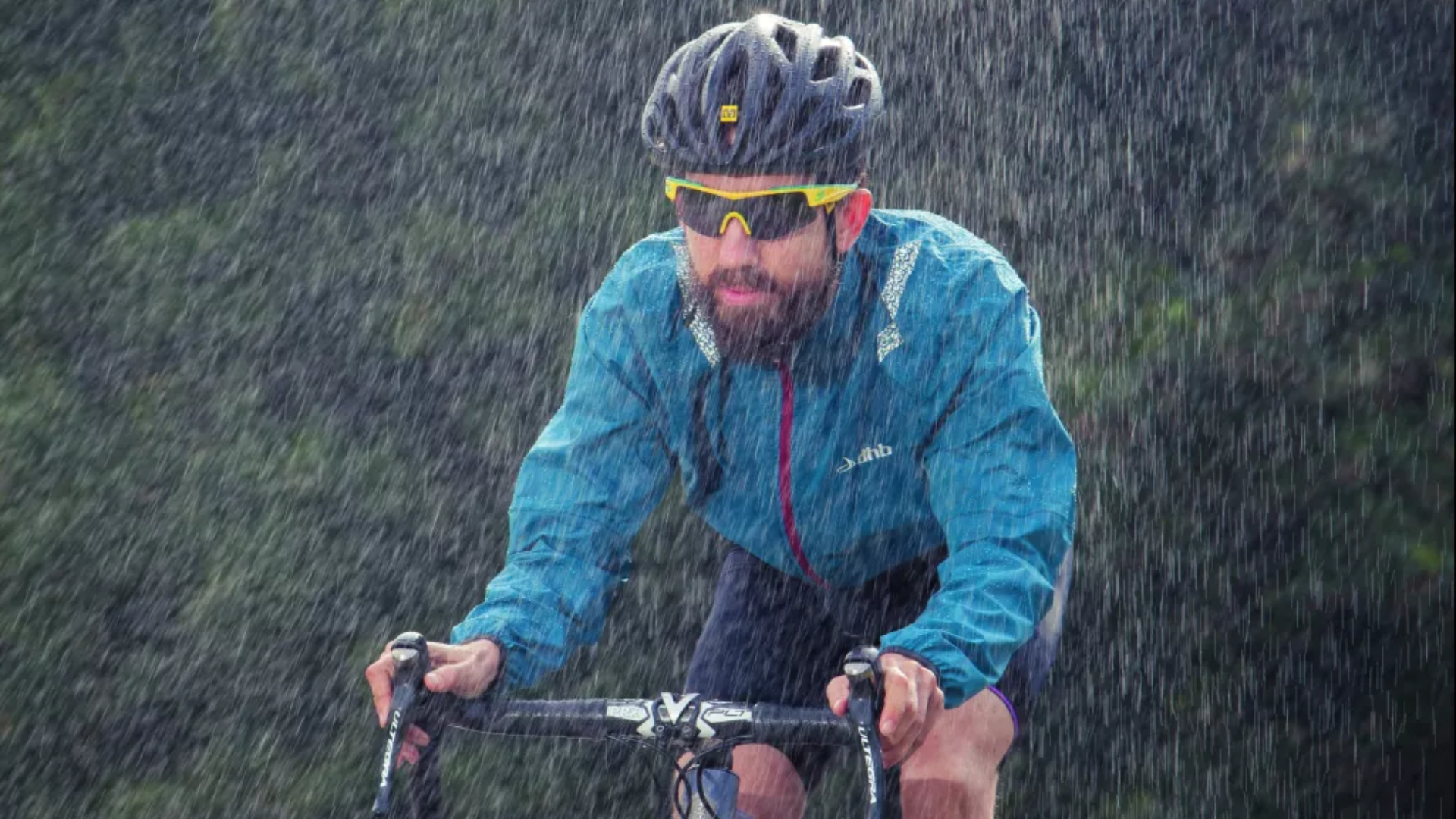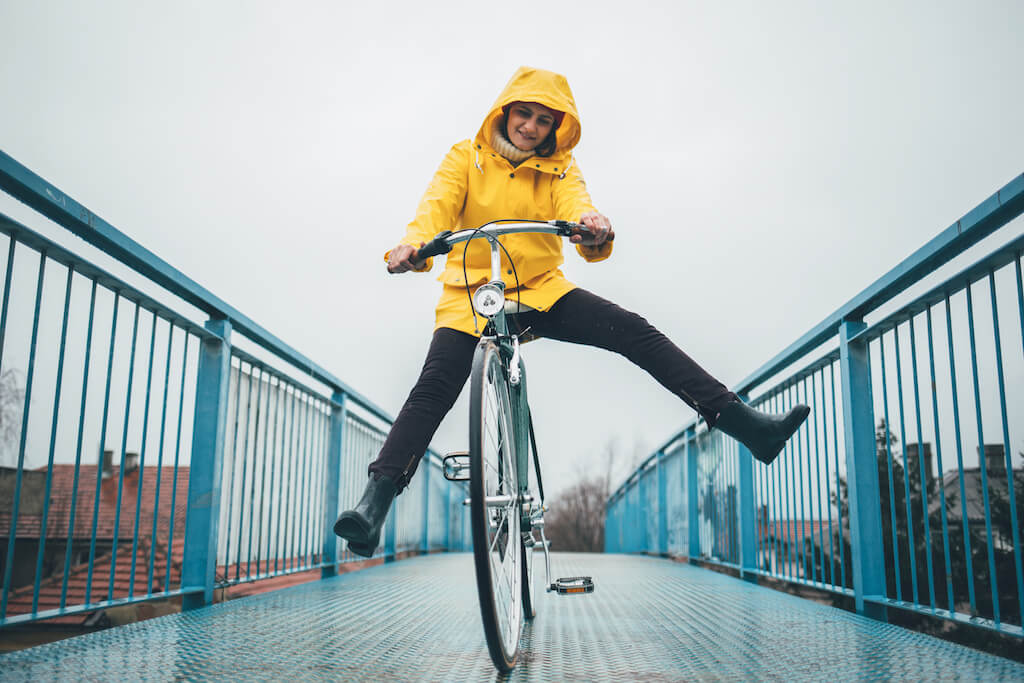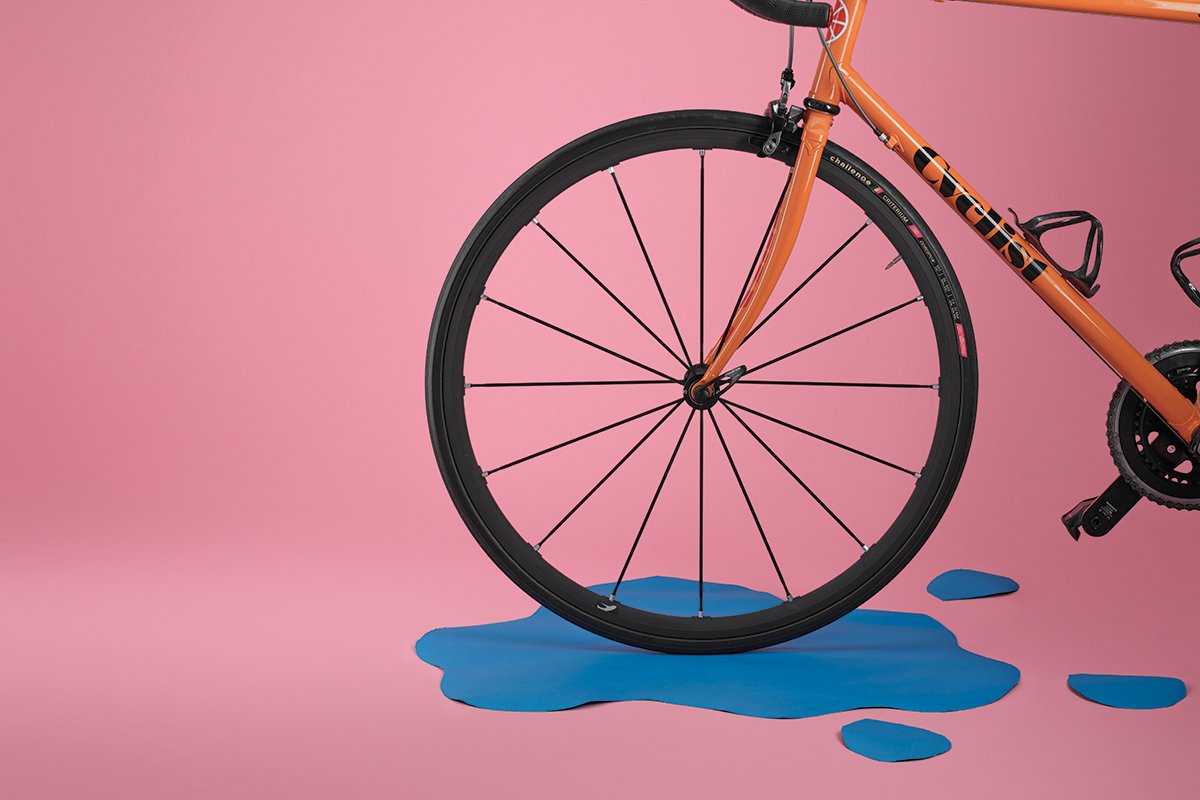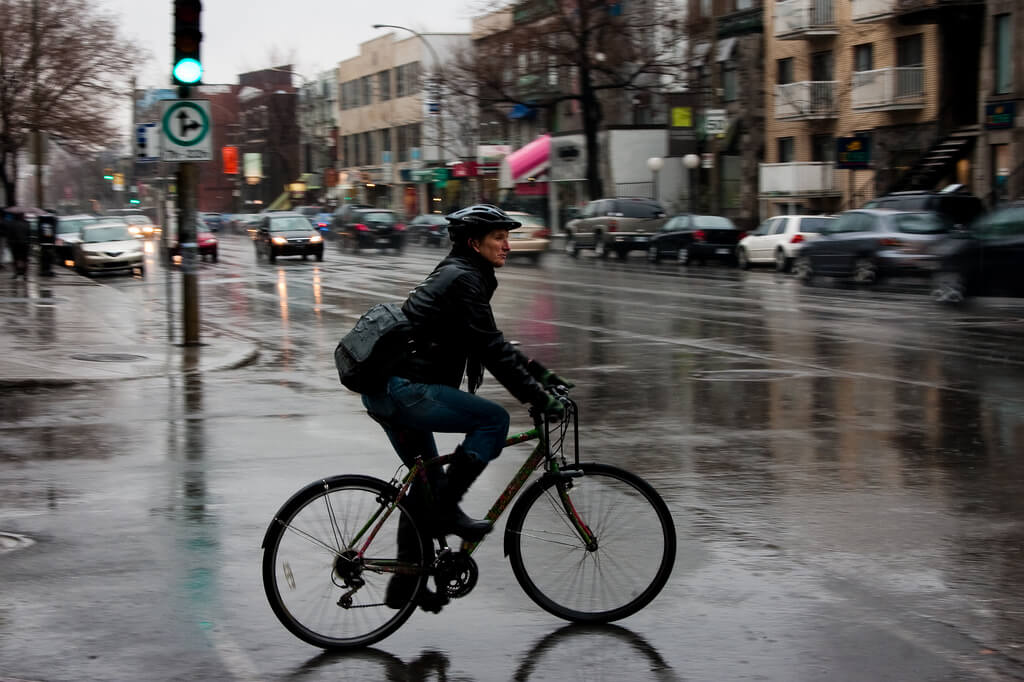I. Introduction

Cycling is a fantastic way to stay active and enjoy the outdoors, regardless of the weather. Rainy days may seem less appealing for a bike ride, but cycling in the rain can be a fun, exhilarating experience. In this article, we will explore the preparations and gear needed for a rainy ride, ensuring a safe and enjoyable cycling experience even in wet weather.
II. Preparing for a Rainy Ride
A. Essential Gear for Wet Weather Cycling
- Waterproof Cycling Jacket: Investing in a high-quality waterproof cycling jacket is crucial for keeping your upper body dry in the rain. Look for jackets made with breathable, waterproof materials to prevent overheating.
- Water-resistant Cycling Pants: Opt for water-resistant cycling pants that repel water and keep your lower body protected from rain and splashes. Look for pants that are stretchy and comfortable for a better riding experience.
- Quality Cycling Gloves: Choose a pair of waterproof and windproof cycling gloves to keep your hands warm and dry during a rainy ride. Look for gloves with good grip to maintain control of your bike handles.
- Cycling Shoe Covers: Slip-on waterproof shoe covers are essential for keeping your feet dry and warm during wet rides. These covers fit over your cycling shoes and provide an extra layer of protection against rain and cold.
- Protective Eyewear: Wear clear, anti-fog eyewear to protect your eyes from raindrops, debris, and potential hazards on the road. Look for glasses with hydrophobic coatings to repel water and maintain clear visibility.
B. Bike Maintenance and Set-up
- Ensuring Proper Tire Tread and Pressure: Check your tires for adequate tread depth and ensure they are properly inflated. This will improve traction and reduce the risk of skidding on wet surfaces.
- Applying Lubrication to the Chain and Drivetrain: Use a waterproof lubricant on your bike chain and drivetrain components to prevent rust and ensure smooth operation in wet conditions. Regularly clean and lubricate these parts to maintain their longevity.
- Adjusting Brakes for Optimal Stopping Power: Wet bike rides require increased braking distances. Make sure your brakes are properly adjusted and in good working condition to ensure optimal stopping power in the rain.
-
Consideration of Fenders and Mudguards: Installing fenders and mudguards on your bike helps minimize water spray and protect both you and your bike from splashes and mud. Ensure they are properly aligned and secure before heading out.
III. Riding Safely in the Rain
A. Adjusting Riding Technique

- Maintaining a Balanced and Relaxed Posture When riding in the rain, it’s crucial to maintain a balanced and relaxed posture. This will help you maintain control of your bike and react effectively to any sudden obstacles or changes in road conditions.
- Slowing Down and Increasing Following Distance Rainy conditions can make the road slippery, increasing the risk of skidding and losing control. To prevent accidents, it’s important to slow down and increase your following distance behind other vehicles. This will give you more time to react and stop safely.
- Avoiding Sudden Braking and Sharp Turns In wet conditions, sudden braking or sharp turns can cause your bike to skid and lose traction. To avoid this, try to anticipate your stops and turns in advance and apply gradual pressure to your brakes. Similarly, take turns slowly and allow for a wider turning radius to maintain stability.
- Using Hand Signals to Communicate with Others Communicating with other road users becomes even more crucial in the rain when visibility may be reduced. Always use hand signals to indicate your intentions to turn, change lanes, or stop. This will help ensure that others are aware of your movements and can adjust accordingly.
B. Enhancing Visibility and Awareness

- Wearing Bright Colors and Reflective Clothing In rainy weather, it’s essential to enhance your visibility to other road users. Wear bright, reflective clothing to make yourself more noticeable. This will help drivers and pedestrians see you more easily, reducing the risk of accidents.
- Using Lights and Reflectors on the Bike In addition to wearing reflective clothing, make sure your bike is equipped with functioning lights and reflectors. Use a front and rear light to increase your visibility, especially in low light conditions or heavy rain.
- Being Alert to Road Hazards and Puddles When cycling in the rain, be alert to potential hazards on the road such as potholes, standing water, or slippery surfaces. Adjust your riding accordingly to avoid these obstacles and minimize the risk of accidents or falls.
- Staying Mindful of Other Road Users In wet weather, visibility can be reduced for all road users. Stay vigilant and be mindful of cars, other cyclists, pedestrians, and even animals. Give them extra space and be prepared for sudden movements, as everyone adjusts to the wet conditions.
IV. Enjoyable Rainy Routes and Routes to Avoid
A. Recommended Rainy Day Cycling Routes

- Parks and Forested Trails Parks and forested trails can provide a beautiful and serene cycling experience, even in the rain. The natural canopy of trees offers some protection from rain, and the lush surroundings can make your ride more enjoyable. Just be aware of any muddy areas or fallen branches along the route.
- Urban Streets with Proper Drainage Systems Cities with proper drainage systems can offer smooth and safe cycling routes during rainy days. Look for roads that have well-maintained bike lanes and are fitted with proper drainage systems to avoid puddles and flooding.
- Scenic Routes with Covered Areas If you’re in a location that offers scenic routes with covered areas, these can be great options for rainy day rides. Look for routes that pass by buildings with overhangs or bridges that provide shelter from the rain. This way, you can enjoy the scenery while staying dry.
B. Routes to Avoid During Heavy Rain
- Flood-prone Areas It’s important to avoid flood-prone areas when cycling in heavy rain. These areas can quickly become dangerous due to fast-moving water and reduced visibility. Stay informed about local flood warnings and choose alternative routes to avoid these areas.
- Busy or High-speed Roads Busy or high-speed roads can be treacherous in rainy conditions due to increased traffic and reduced visibility. Choose quieter and slower-paced roads whenever possible to ensure your safety.
- Routes with Poor Visibility or No Bike Lanes When riding in the rain, it’s best to avoid routes with poor visibility or no bike lanes. These conditions can make it challenging for both you and other road users to see each other, increasing the risk of accidents. Opt for routes with good visibility and dedicated bike lanes to ensure a safer ride.
By following these tips for riding safely in the rain and choosing appropriate routes, you can enjoy your cycling adventures even on rainy days. Remember to always prioritize your safety and be mindful of the road conditions and other road users. Happy riding!

